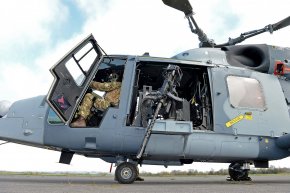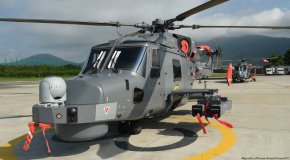I’m not sure NZ is looking at something as high end as MH-60R. If it is, they are about to get a dose of sticker-shock based on the latest FMS approval price for Norway’s requested 6x MH-60R, with all the trimmings costed at USD $1b…
Now of course RNZAF might be able to get away with fewer aircraft saving money, but at that price and given the NZ budget has to include UAS capability as well, the announced budget would be struggling to acquire 4x aircraft at those prices.
Would 4x aircraft plus a flight of naval UAS meet RNZAF’s needs?
South Korea (back in 2013, should be noted…) Awarded Leonardo a USD $800m contract to acquire 12x AW159 Wildcat ASW helicopters.
With a fleet sized appropriately this seems like to be a far more affordable solution… I’m an unabashed fan of this aircraft, I’ve long thought it’s land based compatriot would make a fine aircraft for NZ to replace it’s AW109’s and to employ in a battlefield ISR / light strike role… Killing many birds with one stone, so to speak…
I accept the Wildcat probably wouldn’t come with Mk.54 integrated. I suppose a study on integration / the cost of supporting 2 types of torpedoes in-service (as RAN does…) would be necessary, as it would the intended weapons fit, noting Penguin is probably not integrated on it either and in any case can’t be too far from it’s life of type…
Now of course RNZAF might be able to get away with fewer aircraft saving money, but at that price and given the NZ budget has to include UAS capability as well, the announced budget would be struggling to acquire 4x aircraft at those prices.
Would 4x aircraft plus a flight of naval UAS meet RNZAF’s needs?
South Korea (back in 2013, should be noted…) Awarded Leonardo a USD $800m contract to acquire 12x AW159 Wildcat ASW helicopters.
With a fleet sized appropriately this seems like to be a far more affordable solution… I’m an unabashed fan of this aircraft, I’ve long thought it’s land based compatriot would make a fine aircraft for NZ to replace it’s AW109’s and to employ in a battlefield ISR / light strike role… Killing many birds with one stone, so to speak…
I accept the Wildcat probably wouldn’t come with Mk.54 integrated. I suppose a study on integration / the cost of supporting 2 types of torpedoes in-service (as RAN does…) would be necessary, as it would the intended weapons fit, noting Penguin is probably not integrated on it either and in any case can’t be too far from it’s life of type…
Last edited:





